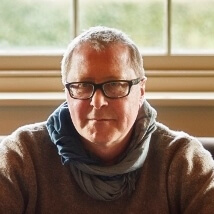Why Trust Lets Innovation Thrive
What do a US animation company, an Icelandic artist and a Canadian telco have in common? Trust.

We all know the company Pixar – they make animated movies. And Pixar is an extremely successful company making great films, not only because they are masterpieces in animation but because they tell compelling stories.
But this is not easy. After the runaway success of Toy Story 1, Ed Catmull and his team agreed there had to be a way of openly and tenderly holding a creative idea so that it could evolve to its true potential of excellence every time.
To do this required the idea to be open to close scrutiny in every aspect of its script, design and production. It was for this reason that the Braintrust was created.
The Braintrust Rules
- In a large room, members of Pixar regularly come together to openly test the development of a film. The rules are:
- Constructive criticism at all times
- Speak with candour, more commonly known as straight talking
- Never instruct the director to do something
- The director listens to feedback and decides what ideas will be followed up on
- Arrive with an open heart and a light heart – laughter is key
- Uphold a belief in collaborative working
We Need Trust
To deliver a working environment like Pixar requires great trust. Without trust there can be no creative collaboration. The focus is on solving a problem. Individual knowledge becomes a collective intelligence; highly valuable in examining how one gets from mediocre to world class.
Catmull believes every movie they start with ‘sucks’ in the beginning. In his words, “meetings are filled with ‘frank talk, spirited debate, laughter and love”; they are there to excavate the truth in a movie and not get lost in complicated creative set ups.
As the director is never instructed to do something, the director listens and develops his or her own interpretation and understanding of feedback given. The director is listening not for reply but ignition and growth of the creative process.
Conversation is key
Conversation is the DNA weaving a particular type of culture. Culture frames how an organisation works. What words we use, how we are allowed to use them, even to whom. They express beliefs, defining actions and finally, outcomes. Conversation intentionally or otherwise, releases and embodies intent and ideas.
Pixar shows us that conversations held in trust, where we engage with openhearted compassion are how we get to deeper insights about ourselves, each other, and, the objects of conversation being explored. It is how we arrive together at making better, wiser decisions.
It is no accident that Pixar uses this principle of talking technology in their organisation. Work culture designed to engender social interaction is more like a craftsman's studio, because it is when we share our knowledge and information that we grow.
It is unusual for a creative company, or any company, to work so rigorously in an open, collaborative environment. It takes patience and time – something Pixar are willing to give.
Creating enduring beauty requires intense collaboration between people who share the purpose of creating something truly unique. Anyone, therefore, no matter in which industry they work, can create their own Braintrust. It might just get you from mediocre to great.
Building a Braintrust
“You can and should make your own solution group,” says Pixar’s Andrew Stanton who has successfully created smaller scale Braintrust sessions on different projects.
“Here are the qualifications: The people you choose must (a) make you think smarter and (b) put lots of solutions on the table in a short amount of time. I don’t care who it is, the janitor or the intern or one of your most-trusted lieutenants: If they can help you do that, they should be at the table.”
The Craftsman
The crafting organisation is a phrase relevant to every business. Drawing upon the insight of the craftsman’s workshop is how one learns. It is how one becomes a better practitioner through the sharing of information, knowledge and ideas, and having better conversations. More soulful companies understand the integral value of crafting.
Olafur Eliasson, the Icelandic artist famous for his light installation in the Tate Modern Turbine Hall a few years ago, has a canteen in his Berlin studio feeding his 90 staff vegetarian food everyday.
Eliasson believes breaking bread and communing is about creating trust, it’s familial. Information is shared. Trust is created. They see eating together everyday as nourishment, a source of creative inspiration and a gathering for his staff, artists, and guest collaborators.
The same principle is applied at Telus, a Canadian Telecommunications company. With 35,000 employees around the world, Dan Pontefract the Head of Social Learning and Collaboration, believes that knowledge shared becomes intelligence.
Incremental learning is an asset that can then be rapidly applied. They do this through company wiki’s, micro-blogging platforms, even video. This social learning creates a constant practice of improvement. His belief is that the social sharing of information creates trust.
One sixth of their 35,000 employees are active. That is a considerable amount of knowledge. Social sharing is used as a collaborative craft practice which enables agility and insight on a daily basis.
Muhammad Ali was once asked what his best poem was, he replied, “Me, We”.
Alan Moore is an author, speaker and craftsman of Beautiful Businesses.
Thanks for signing up to Minutehack alerts.
Brilliant editorials heading your way soon.
Okay, Thanks!


